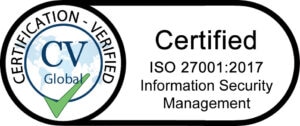HOW YOUR FIRM CAN REIN IN DATA SPRAWL.
Home / Blog / Future-proofing / How your firm can rein in data sprawl
It’s said that every business is now a digital business. Even the smallest firms are now highly dependent on digital devices and applications, while for larger enterprises, it’s impossible to get by without the use of smartphones, tablets and other devices to keep employees in touch with the firm’s data and applications at all times.
But while effective use of these tools is essential for success today, the pace of adoption can present its own problems. If businesses are not careful, they may find their IT departments simply can’t keep pace with the number of new gadgets being connected to their network and, more importantly, the amount of sensitive business data that these gadgets access.
The result of this is often a vast, sprawling network with huge numbers of devices accessing critical data. These all need to be managed, secured and monitored, and if you don’t have complete visibility into what’s going on, you could face serious security risks
Why data sprawl is a growing issue
There are a number of reasons why you can find your IT estate spiralling out of control, with this sprawl often being driven by the addition of new devices as the company grows, and an increasing desire from employees to work more flexibly and access the corporate network whenever and wherever they want.
As technology advances, many businesses may find it easier and more productive to bring in a range of mobile devices. Warehouse workers, for instance, can be much more efficient if they have a smartphone or tablet they can turn to in order to get the information they need, while remote employees, such as sales personnel in the field, are much better informed if they can connect back to head office and ensure all the figures they have are up to date.
The result of this is the number of mobile devices is increasing hugely. One study by Enterprise Mobility Exchange found, for example, that almost three-quarters of firms (72 per cent) have at least 100 corporate-owned devices on their network, while almost one in three (32 per cent) have to manage more than 1,000 mobile gadgets. This does not even take into account the many employee-owned smartphones and tablets that will be accessing networks, with or without the IT department’s permission.
The challenges facing businesses
One of the biggest issues as the result of this is a lack of visibility and insight into what is going on within your network. This can give rise to a range of issues, from security concerns to unforeseen extra costs.
Perhaps the most pressing concern for many businesses will be the security challenges this poses, especially when it comes to data loss prevention (DLP). This should be a particular focus in today’s regulatory environment, with the introduction of the EU’s General Data Protection Regulation (GDPR) in 2018 greatly increasing business’ responsibilities when it comes to safeguarding the data they have, as well as adding much tougher penalties for any failures in this area.
However, you can’t protect what you can’t see, and if your employees are accessing sensitive data and applications from devices you aren’t even aware of, this could be one of the biggest security threats your firm may face. In such a situation, all it may take is someone accessing an insecure Wi-Fi network when they’re out and about, or carelessly downloading malware from an App Store, to expose your business to data breaches.
But the security threat posed by devices you aren’t aware of and can’t control is just one of the problems that can come with a sprawling, out of control network. Even if you are aware of what devices are within your IT estate and where they are, there are still issues that will need to be addressed.
A strong DLP strategy means businesses need full control over their devices – both those directly provided by the business and employee-owned handsets. For example, if a device is lost or stolen, will you be able to wipe it remotely to prevent data from falling into the wrong hands? If you are allowing the use of employee-owned smartphones and tablets, how can you set up secure partitions so that any sensitive business data is unable to be accessed by consumer apps that may be infected with malware?
These are challenging issues even in the most controlled mobile environments, but as the number of devices grows – typically encompassing a wide range of hardware and software platforms – it becomes an even bigger task.
The right tools to regain control
Tackling these issues will not be easy, but here are a few key steps that all businesses should take in order to rein in their network sprawl. Firstly, firms need to have a clear idea of exactly where their network perimeter is and what devices are permitted to access it.
This means having clear policies in place for the use of mobile devices, with training for all users to ensure they understand what their responsibilities are when using mobile devices for work, be these their own gadgets or those issued by the company.
However, while user education is a must, this needs to be supported by the latest technological solutions. In particular, an effective tool, such as SYMEC HUB paired with mobile device management (MDM) capabilities, is an essential part of a firm’s strategy if you are to regain control of your network sprawl.
This allows you to regain full visibility into every device on your network, which can be broken down by device type, operating system, model or which departments/employees they are assigned to. Within this, you should be able to view a full breakdown of each item’s health and status, alerting you to any problems as soon as they arise, while also allowing you to be more proactive after managing issues such as upgrades and repairs.
With SYMEC HUB, you can easily formalise your processes, replacing ad-hoc repairs and replacements with a clearly-documented set of steps that allows users to raise tickets for any issues and track the progress of any report. It also allows IT departments to quickly spot trends within their network, allowing them to take appropriate steps, such as organising extra training or assigning additional devices to parts of the business that need them the most.
Read More About Future Proofing

Symec Awarded Android Gold Partnership Status
Symec Awarded Android Gold Partnership Status Symec Technologies, a leader in mobile solutions, proudly announces its Android Gold partner program status. This recognition highlights their

Why RFID Technology is the next step in Warehouse Evolution
Why RFID Technology Is the Next Step in Warehouse Evolution Creating a Smarter Operation with Real-Time Tracking and Visibility Introduction: The Importance of Efficient Warehousing

Zebra Warehousing Vision Study
Warehousing, distribution and fulfilment operations are undergoing a modern-day makeover as they transform to meet the growing demands of the world’s instant gratification, on-demand economy.












